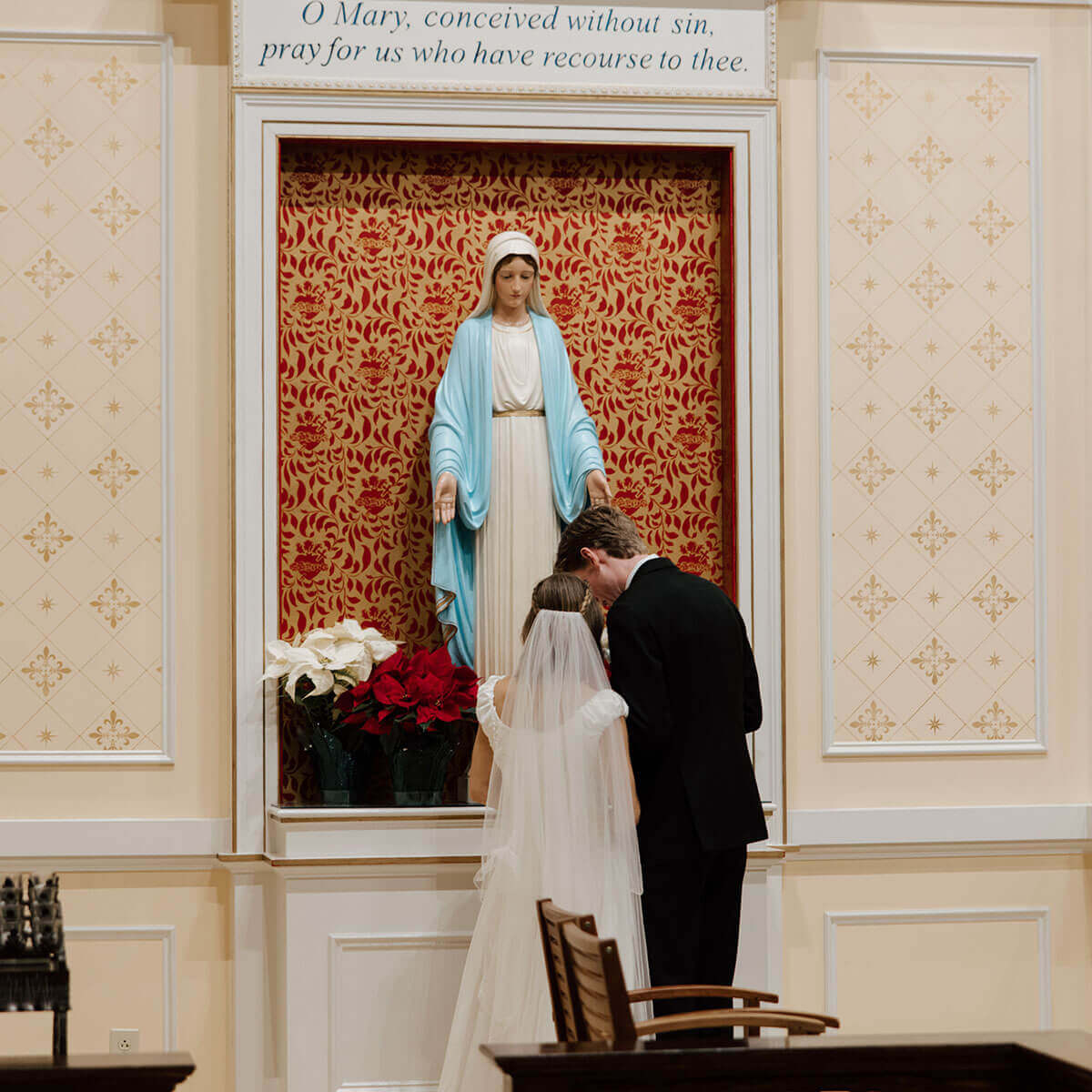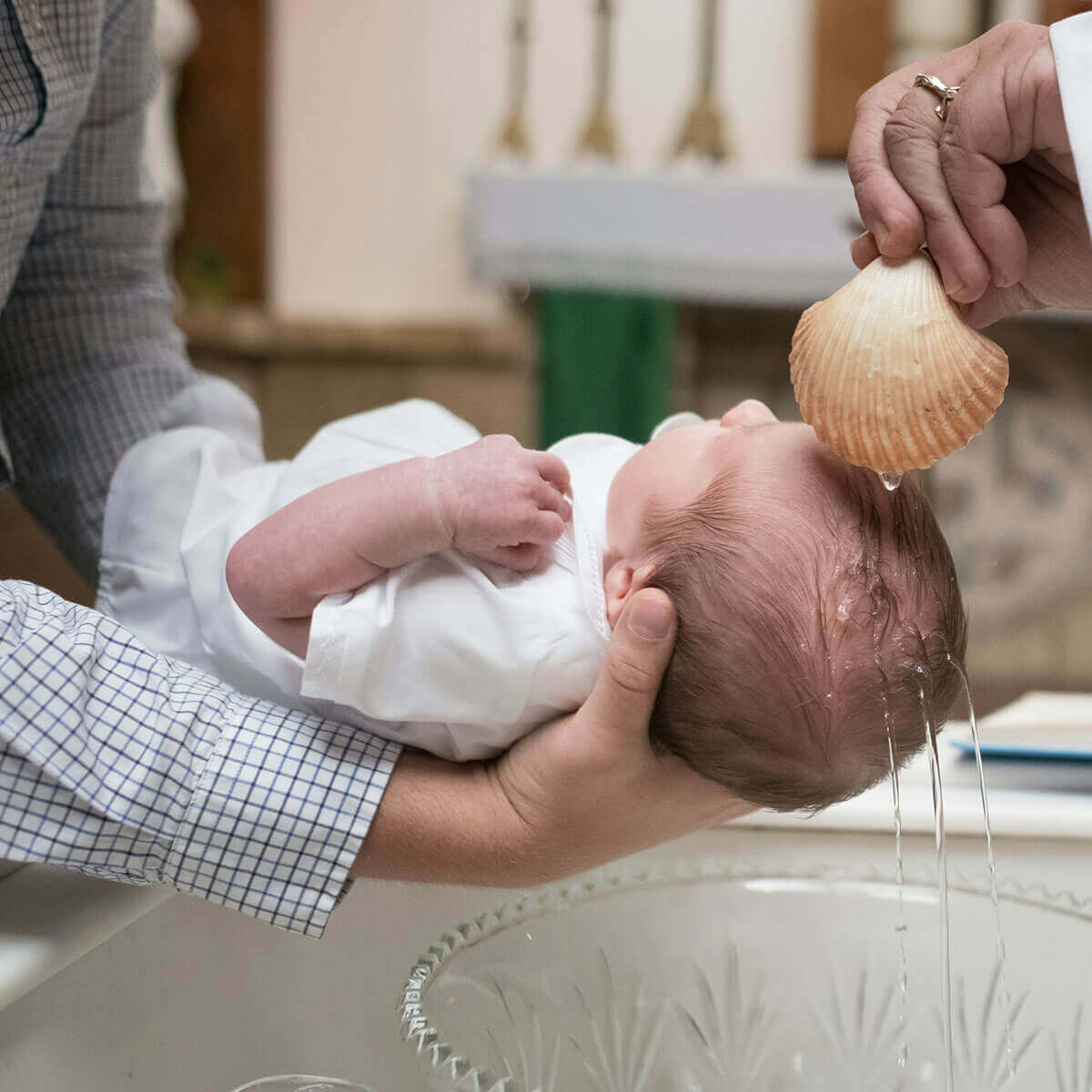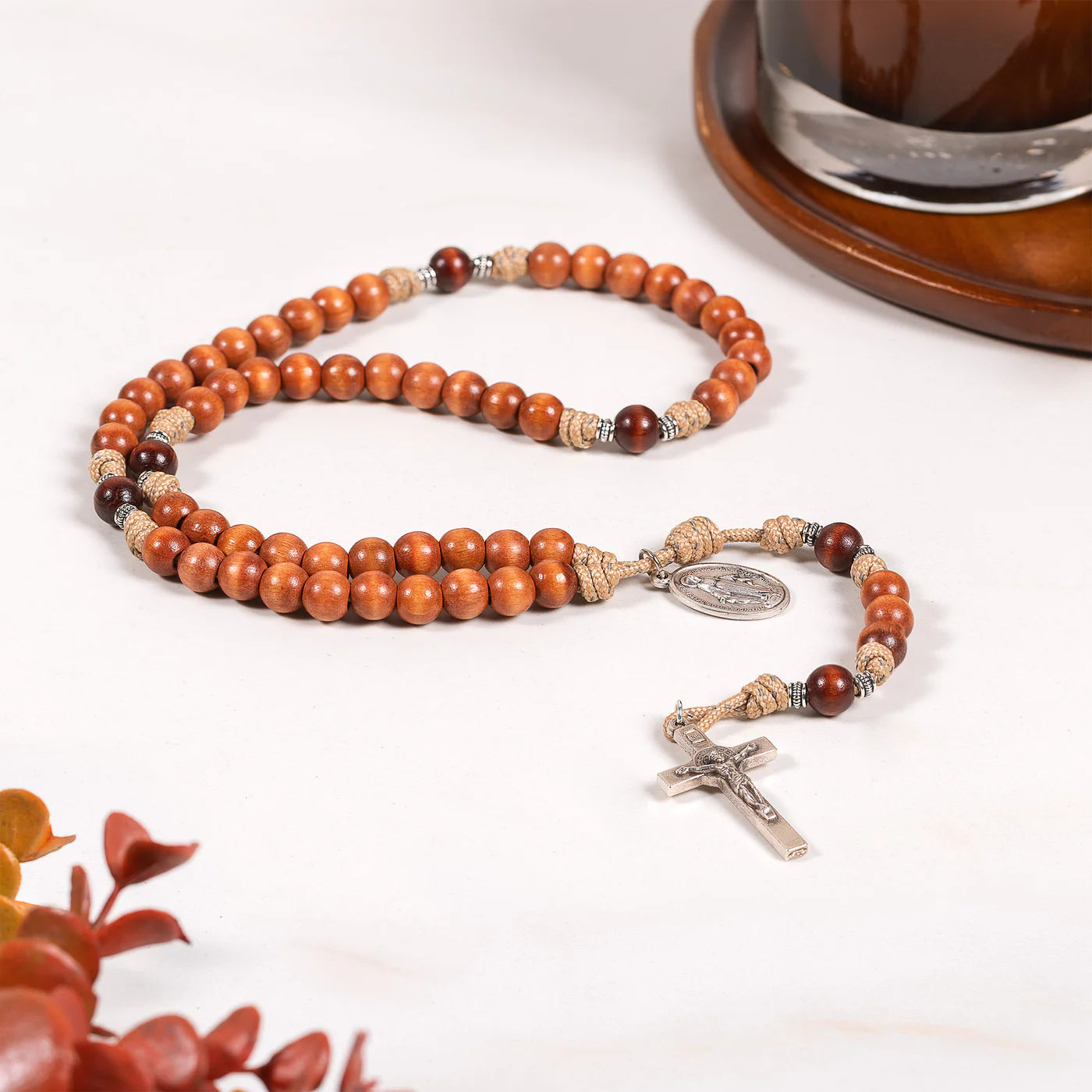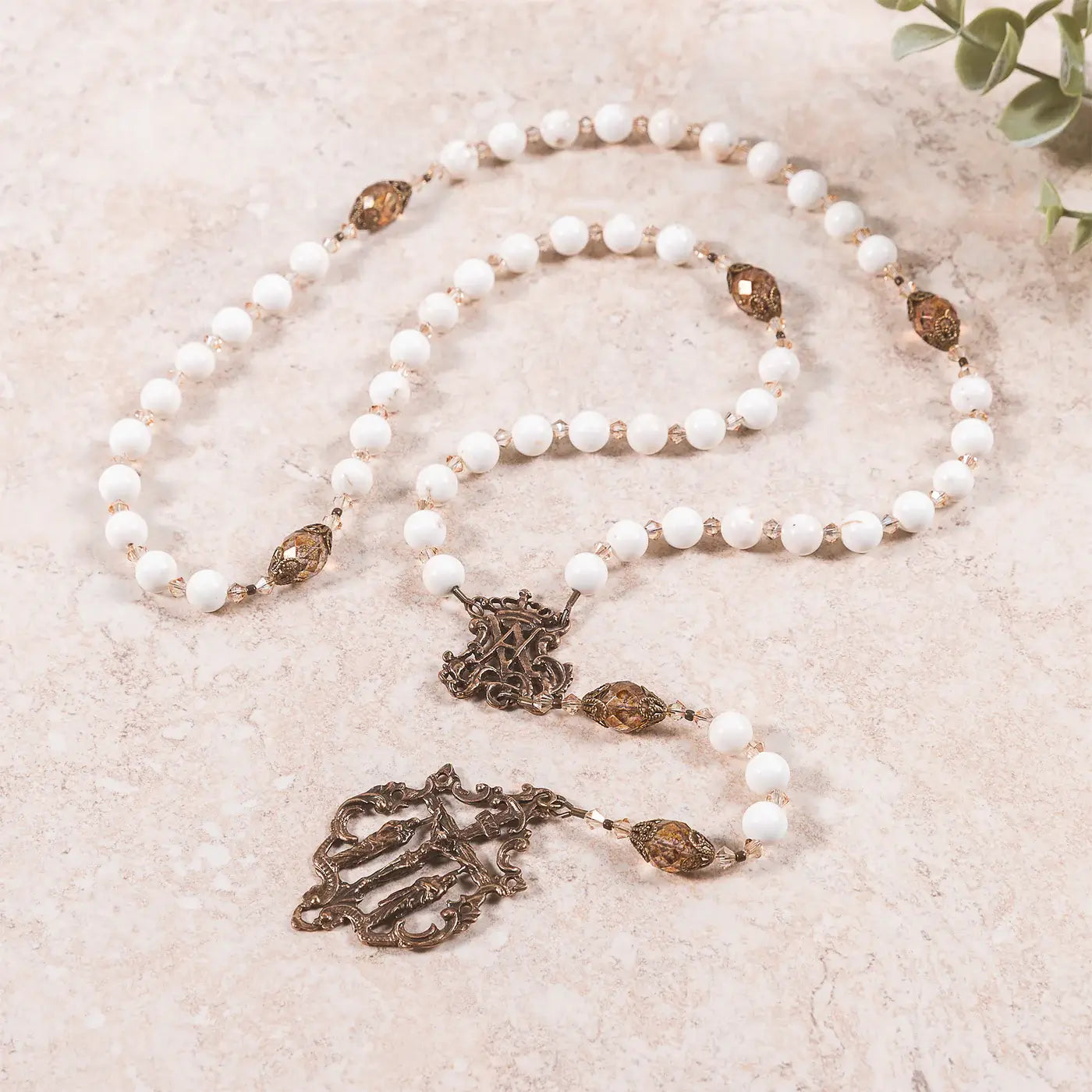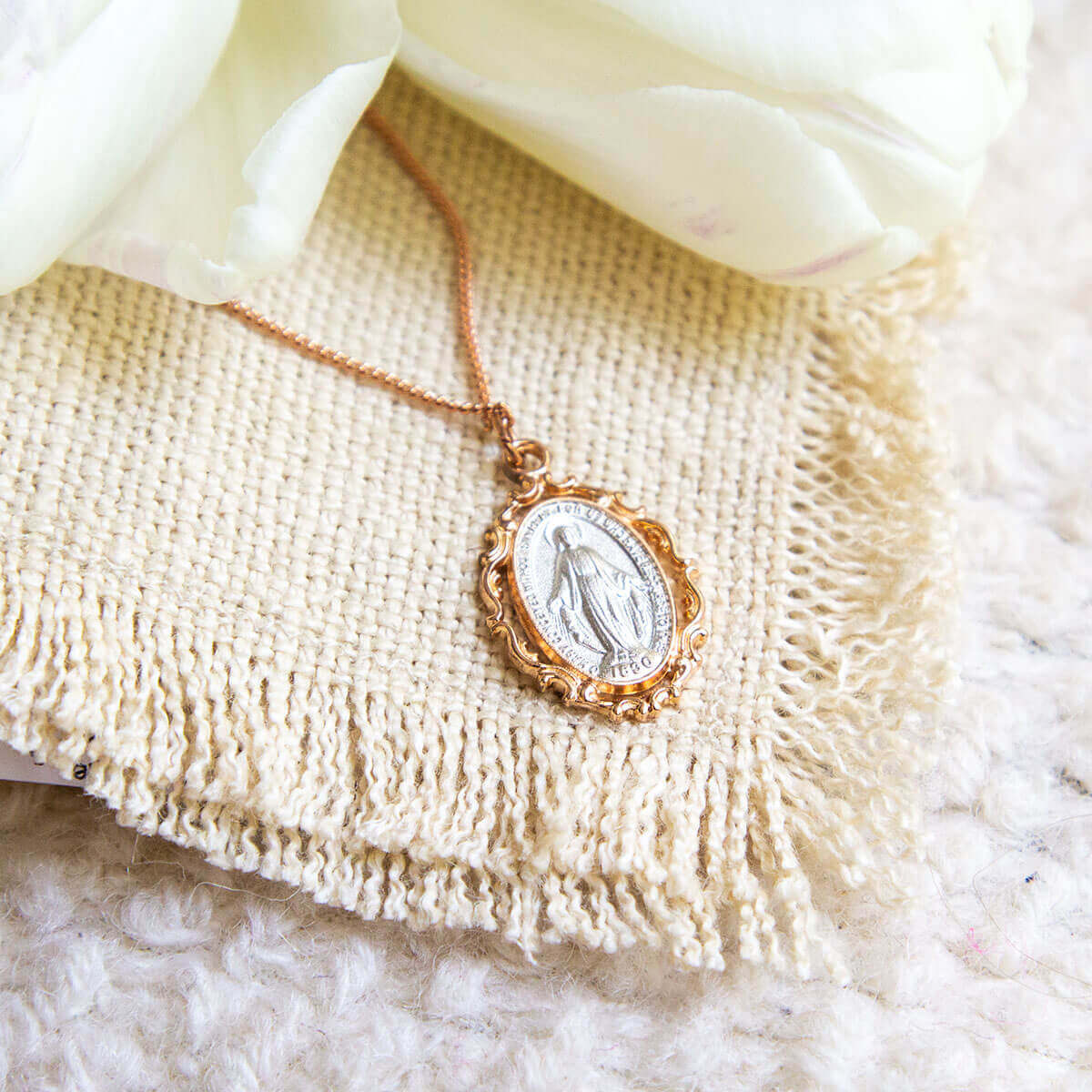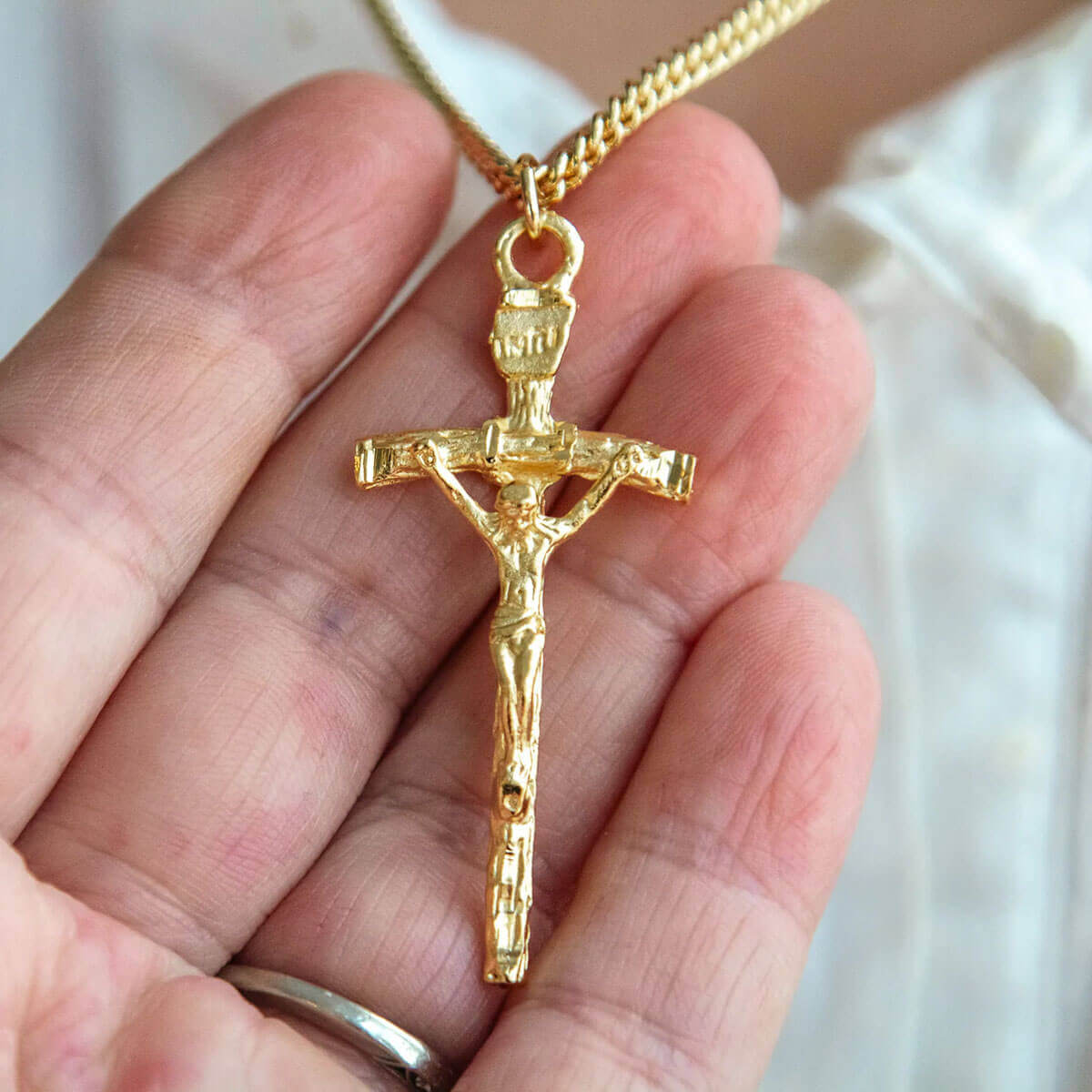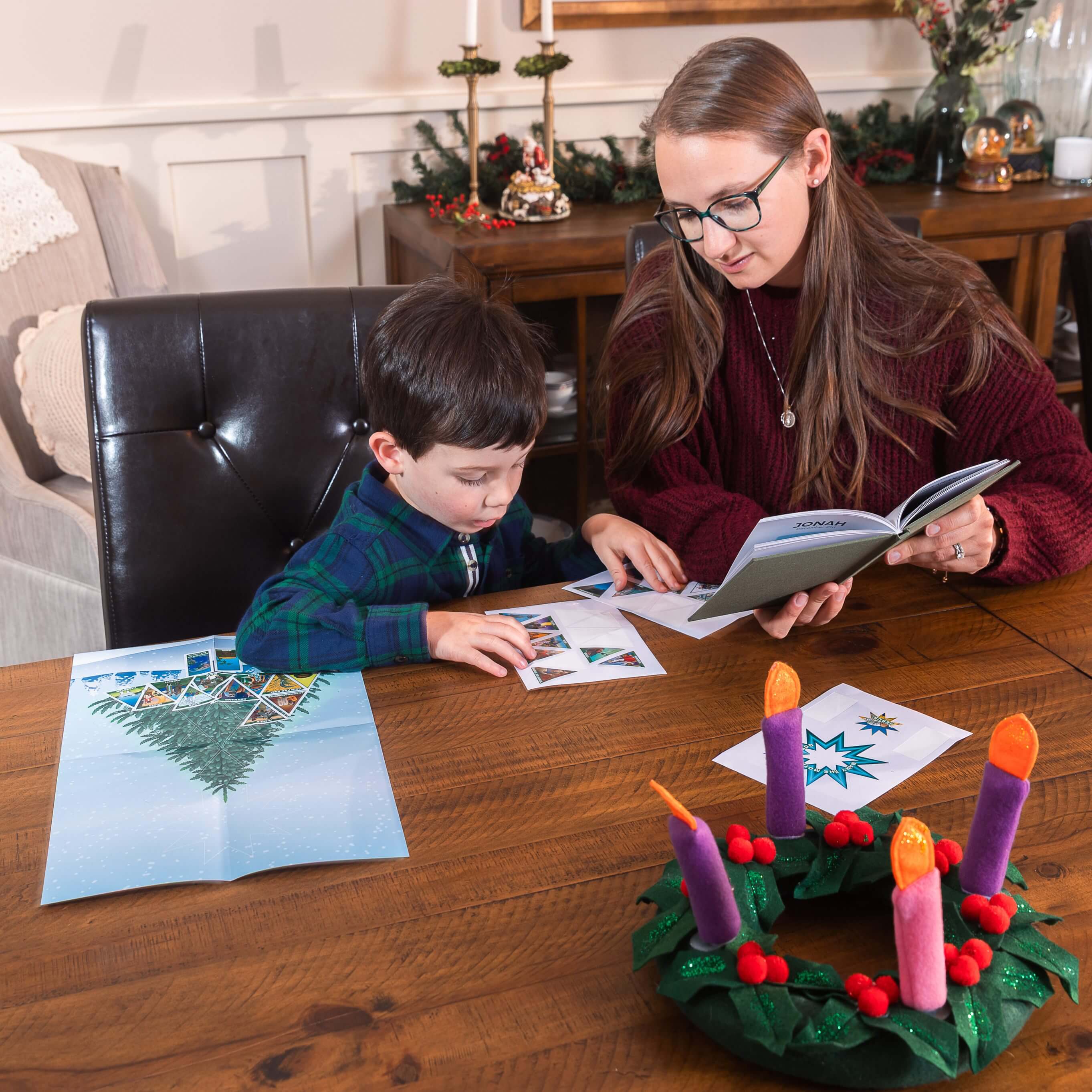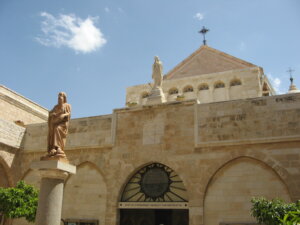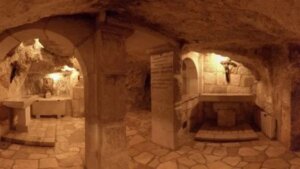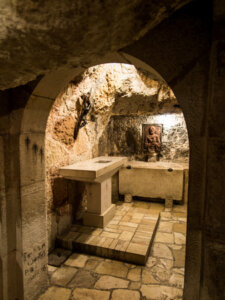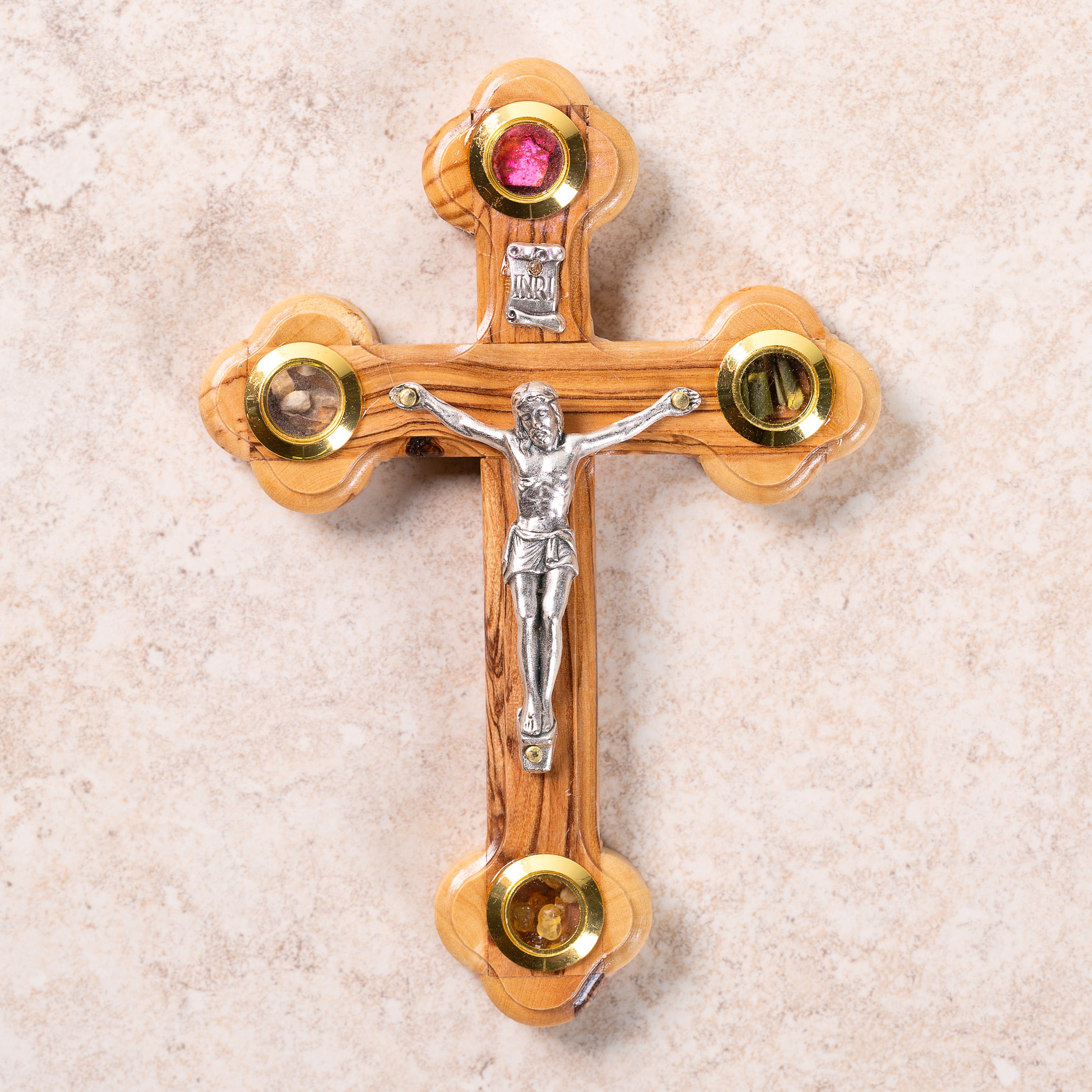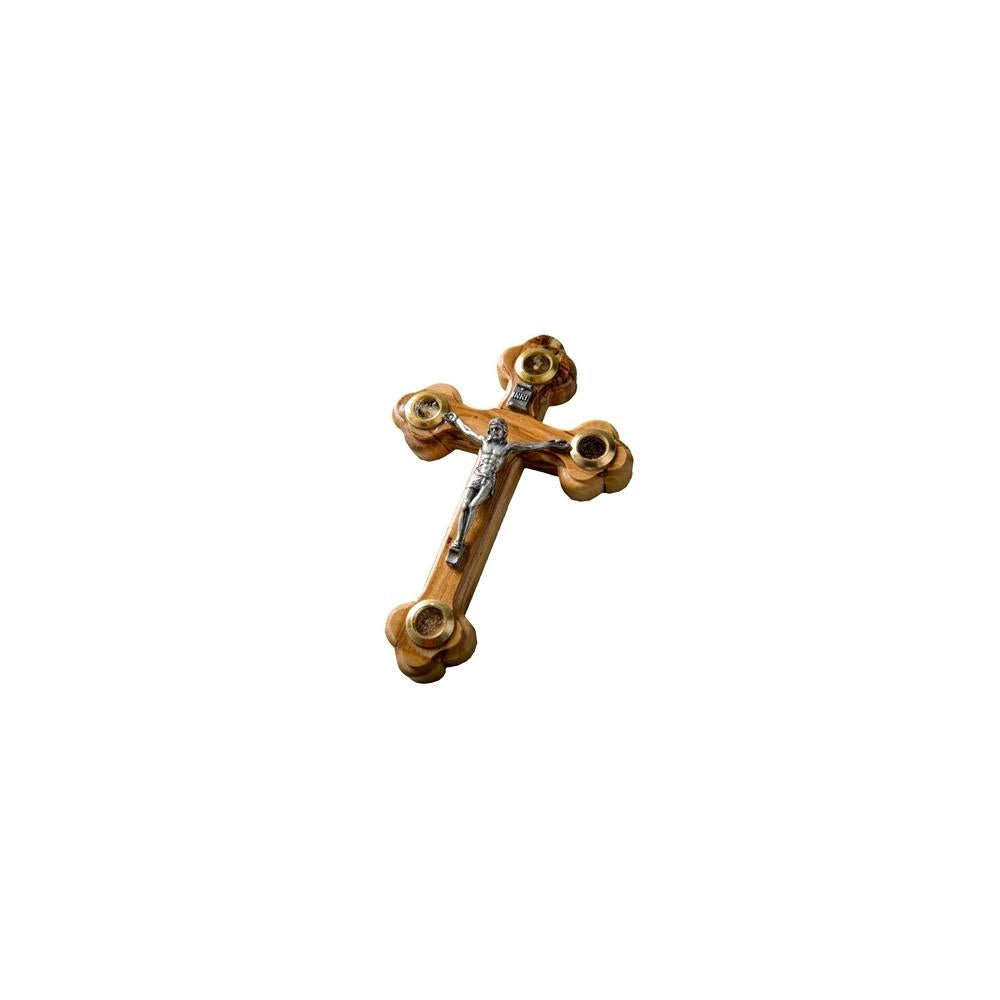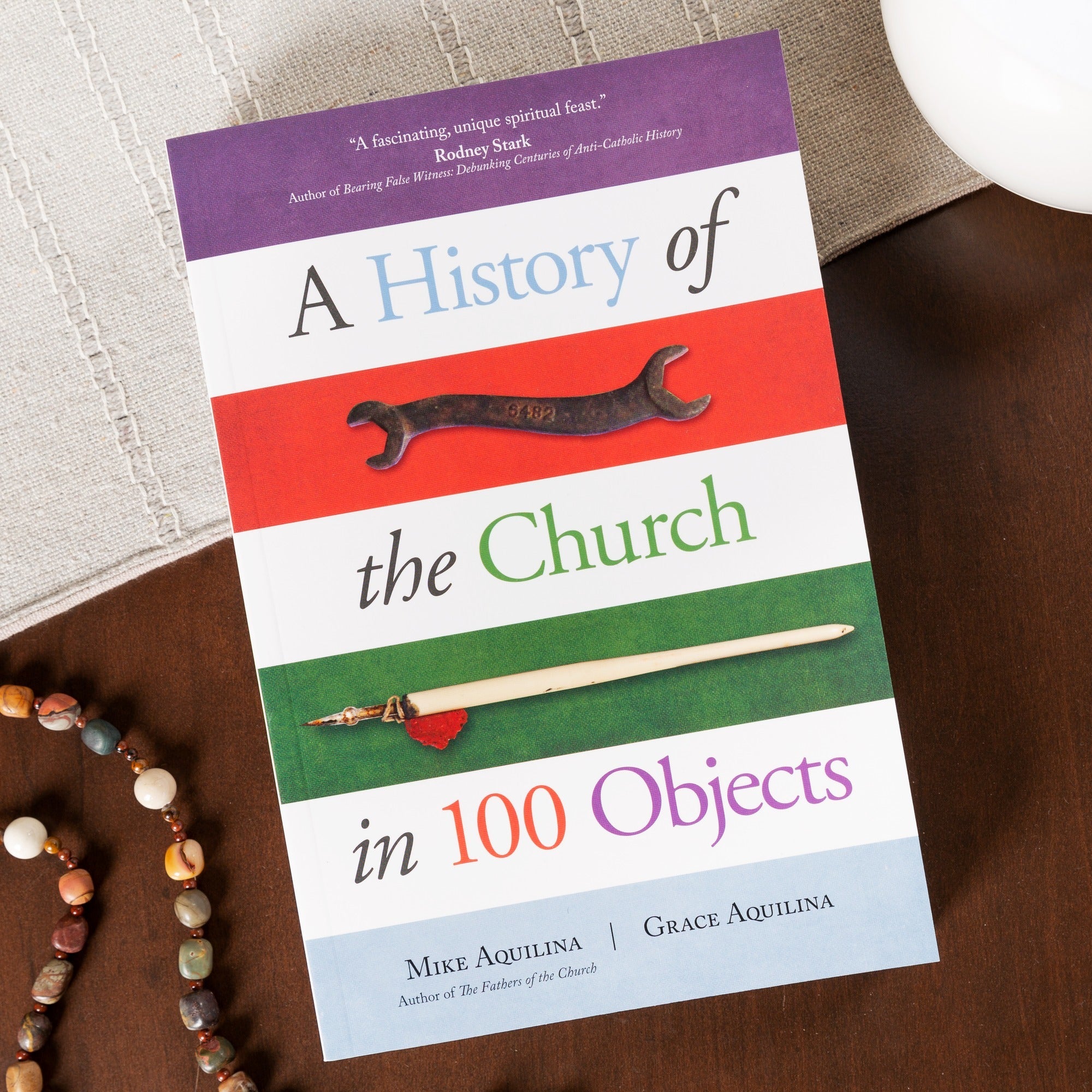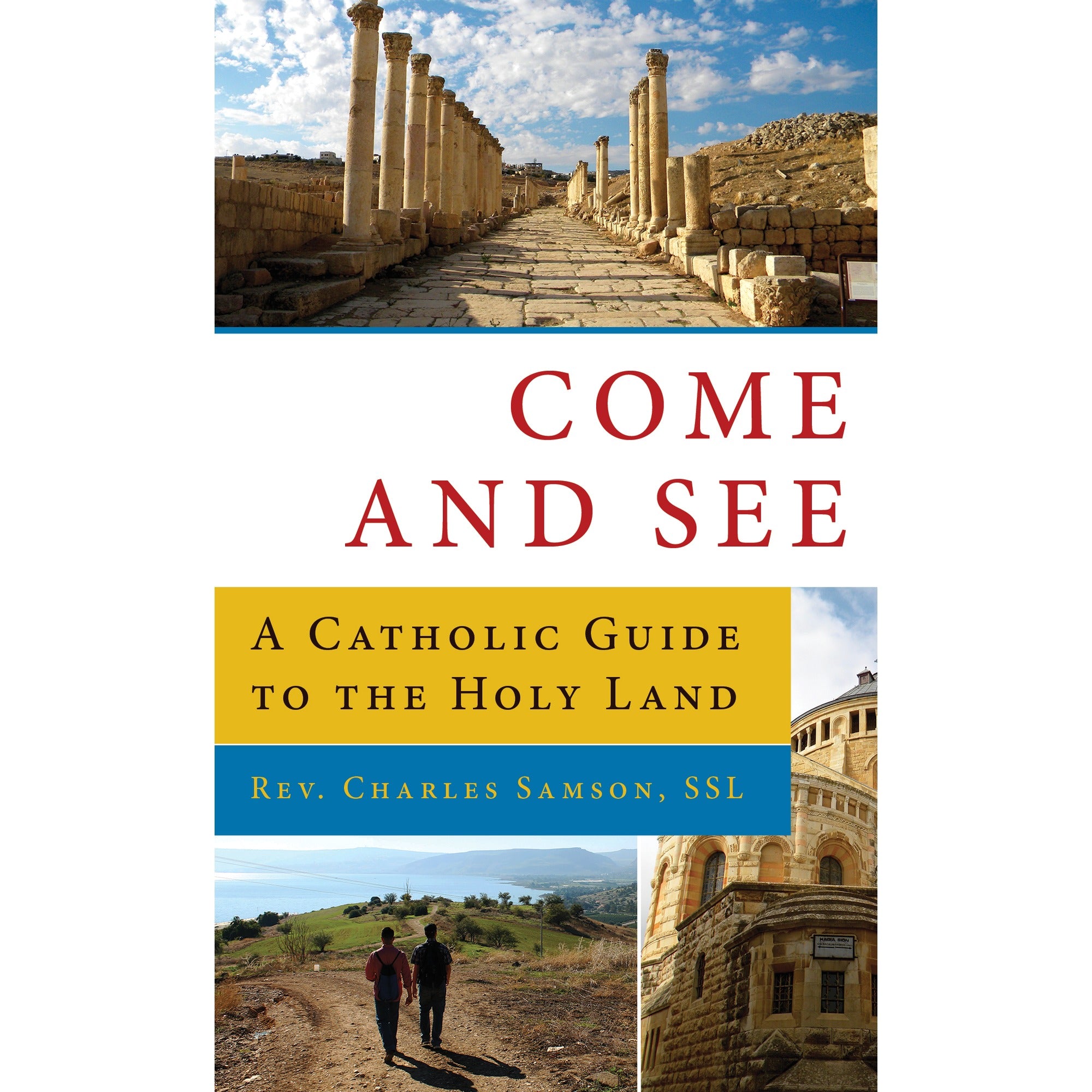St. Jerome was once a staunch atheist but later converted to Christianity, becoming one of the Church’s best theologians. During the 4th century A.D., St. Jerome dedicated fifteen years of his life to translating the Bible from its original Hebrew and Greek into Latin, which resulted in the Vulgate Bible, the first vernacular version of Sacred Scripture.
St. Jerome often worked on the Vulgate from his study in a cave near the Church of the Nativity in the Holy Land. In fact, we can visit the very place in which he penned these groundbreaking translations of Sacred Scripture.
St. Jerome’s cave is accessible from the Church of St. Catherine, another majestic pilgrimage site in the Holy Land. From the nave of the church, steps lead down to a cave with several underground chambers. At the very end of the cave, there are the two rooms in which St. Jerome lived and worked on the Vulgate.
The other chambers at this site are identified as the burial places of St. Jerome and his successor St. Eusebius. Two other chambers are burial sites for St. Paula and her daughter St. Eustochium, who helped St. Jerome make Bethlehem into a monastic center.
The cave also includes the Chapel of the Holy Innocents, which is believed to be the burial place of the infants who were killed by King Herod.
If you get a chance to visit the Holy Land, don’t miss the opportunity to see the historic place in which St. Jerome produced one of the best translations of Sacred Scripture.
Can’t travel to the Holy Land? A great way to bring a piece of home is to own something from the Holy Land. This Olive Wood Crucifix with Jerusalem Soil was handcrafted in the very place where Jesus once walked. It contains four windows on each point of the cross that hold little bits of earth from the Holy Land, including soil, stones, incense, and flowers. Get one for your living room, bedroom, or office here.




